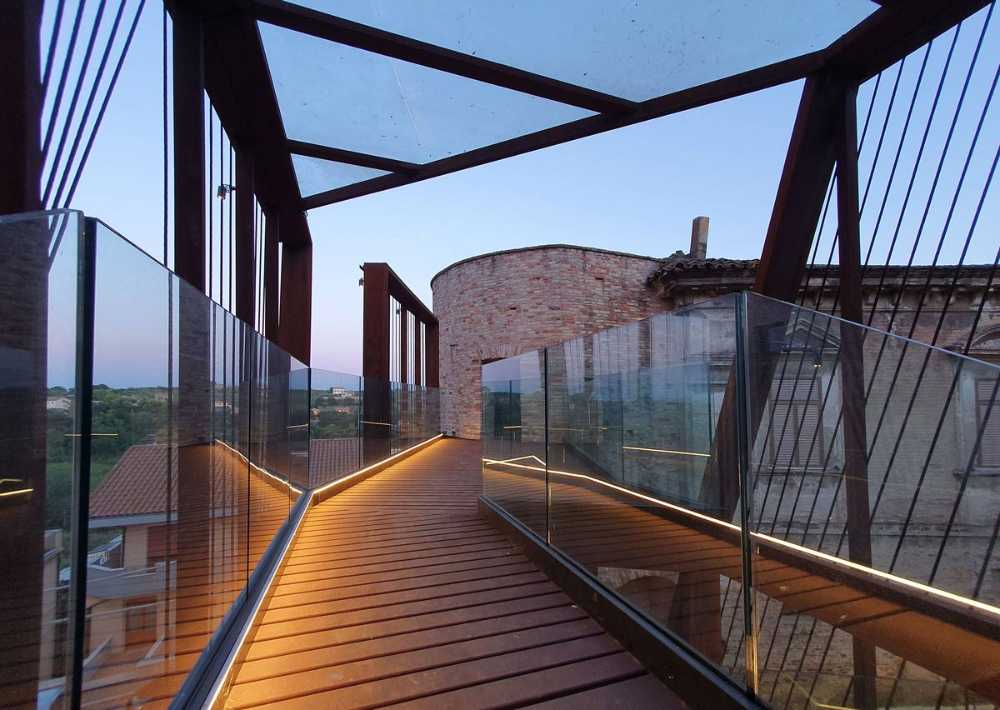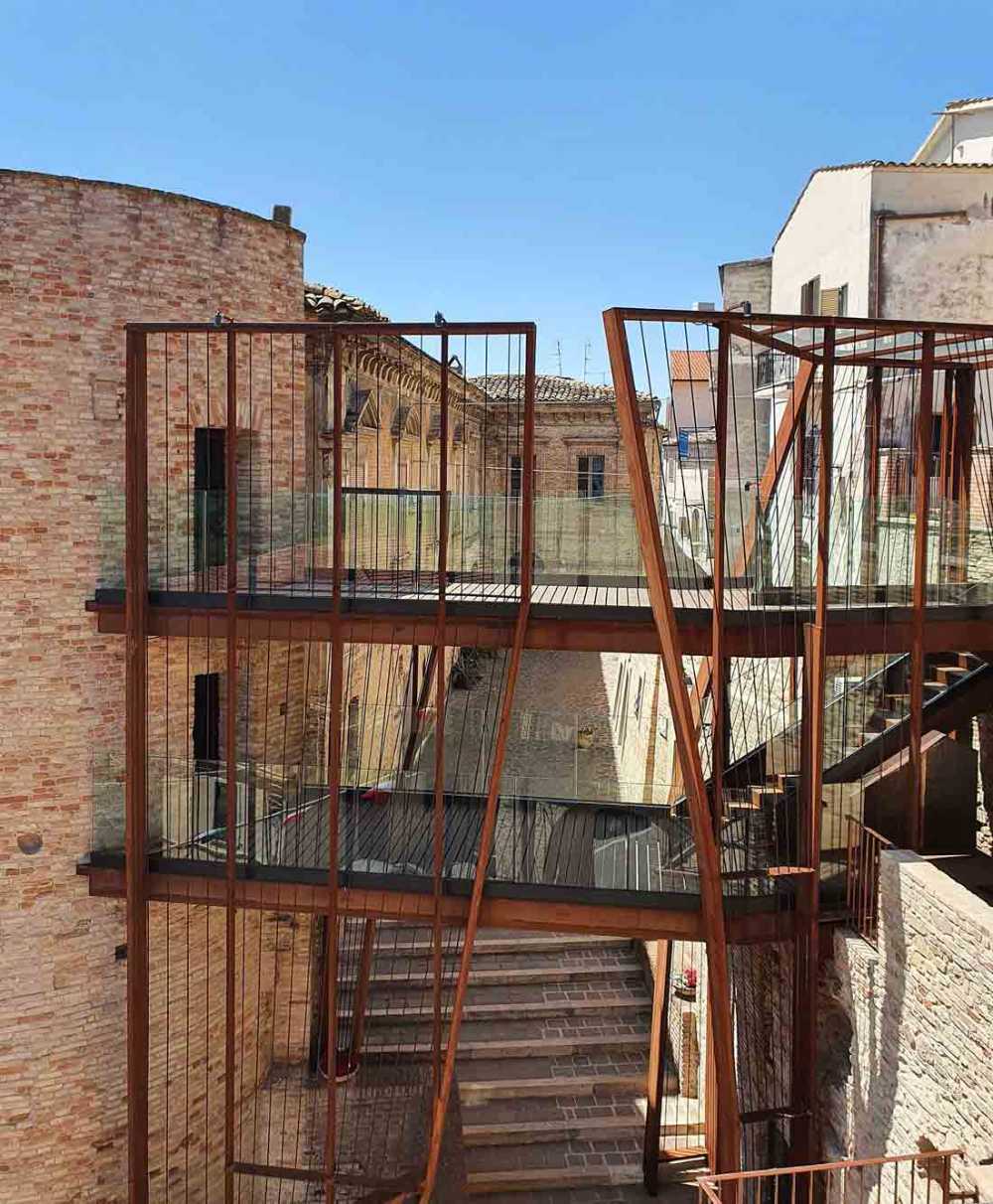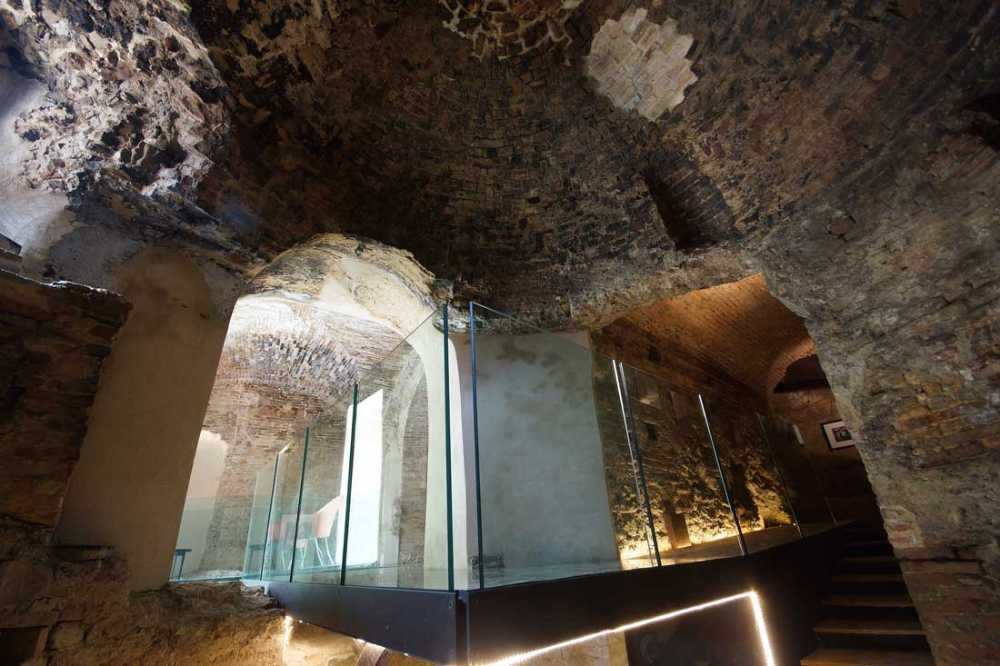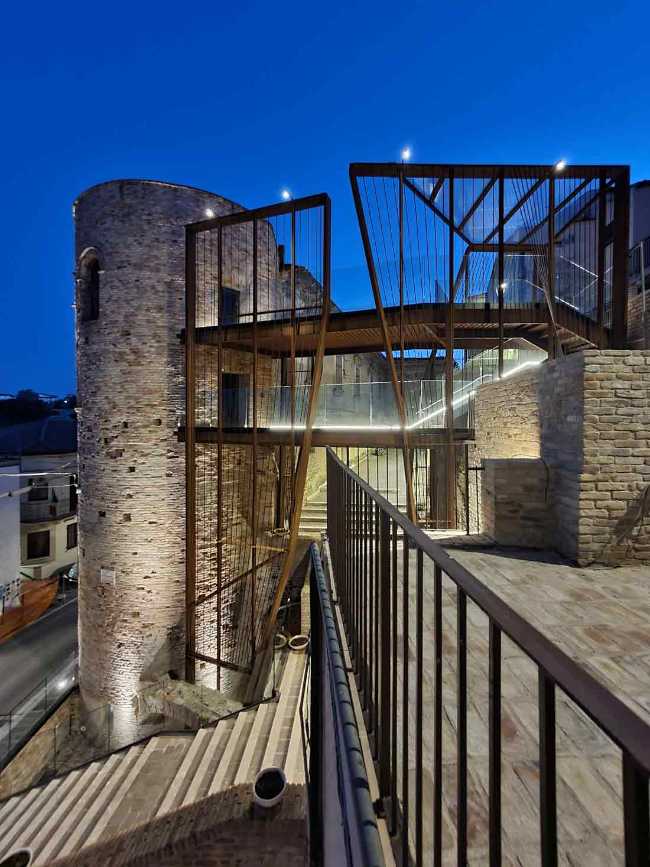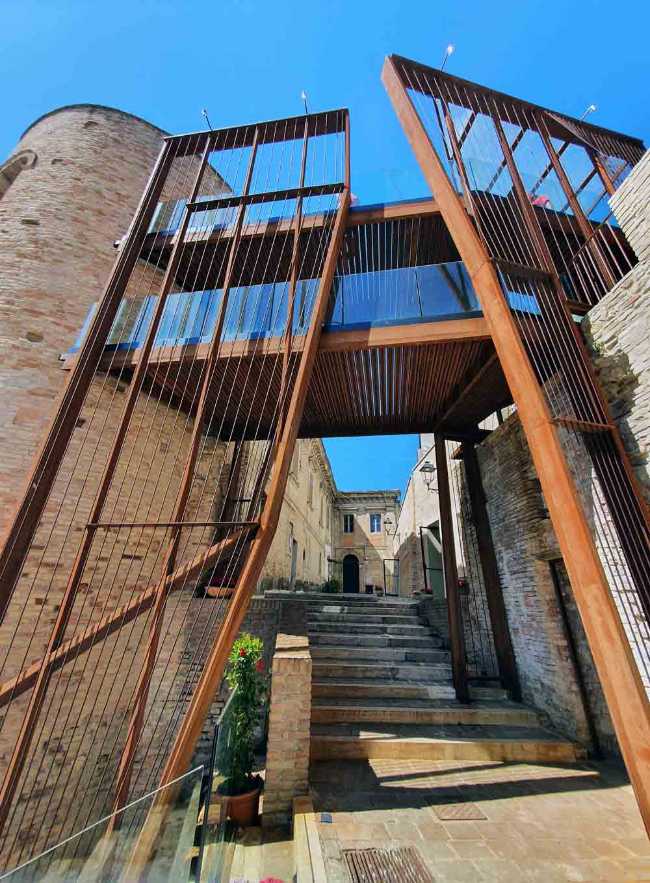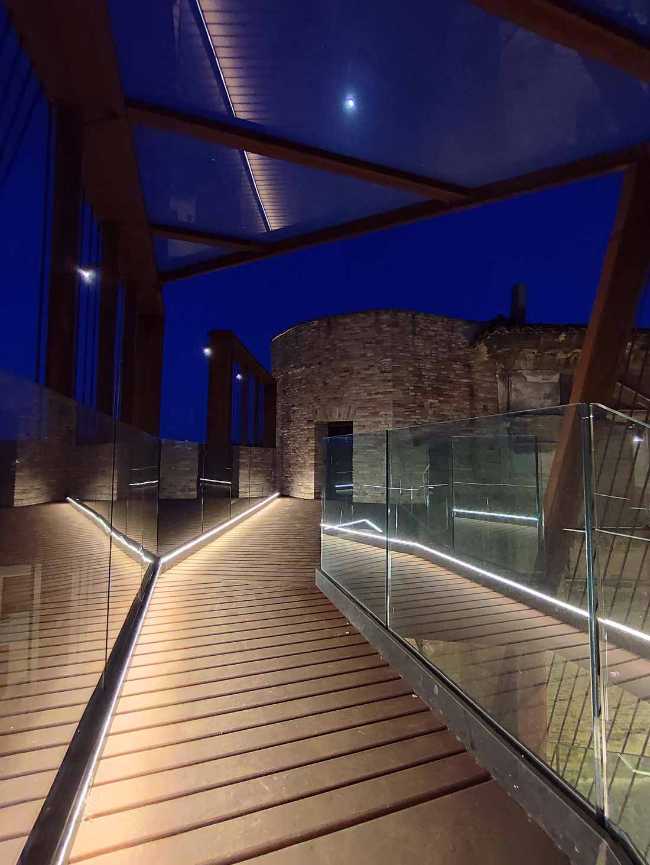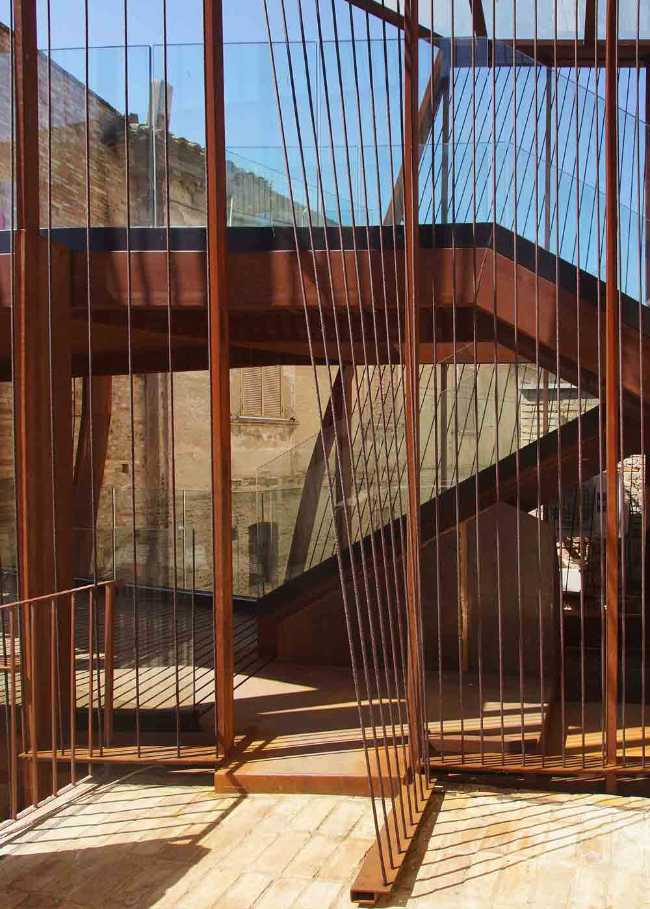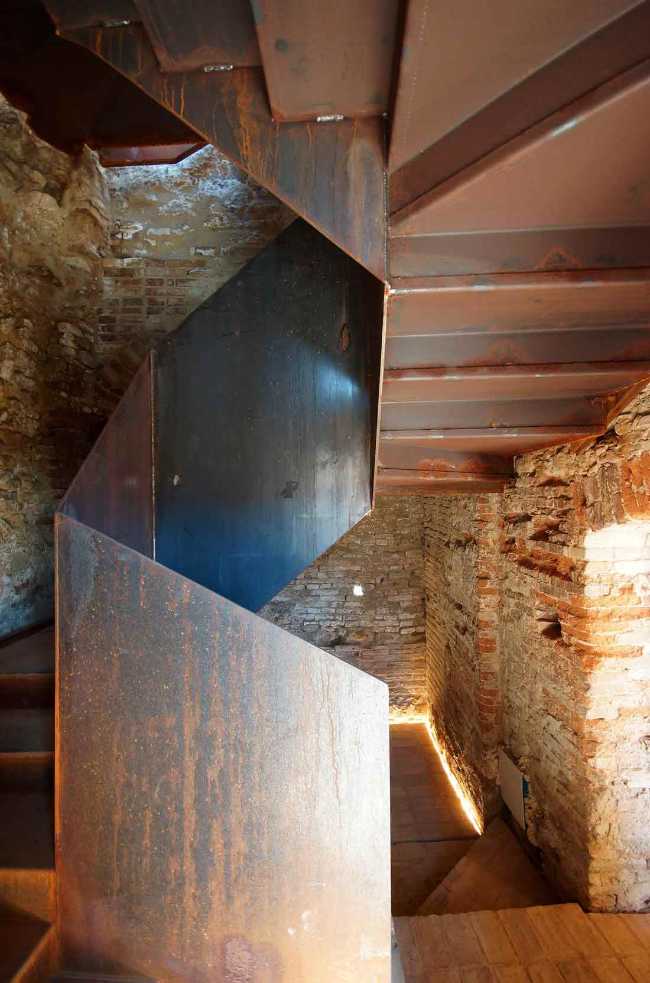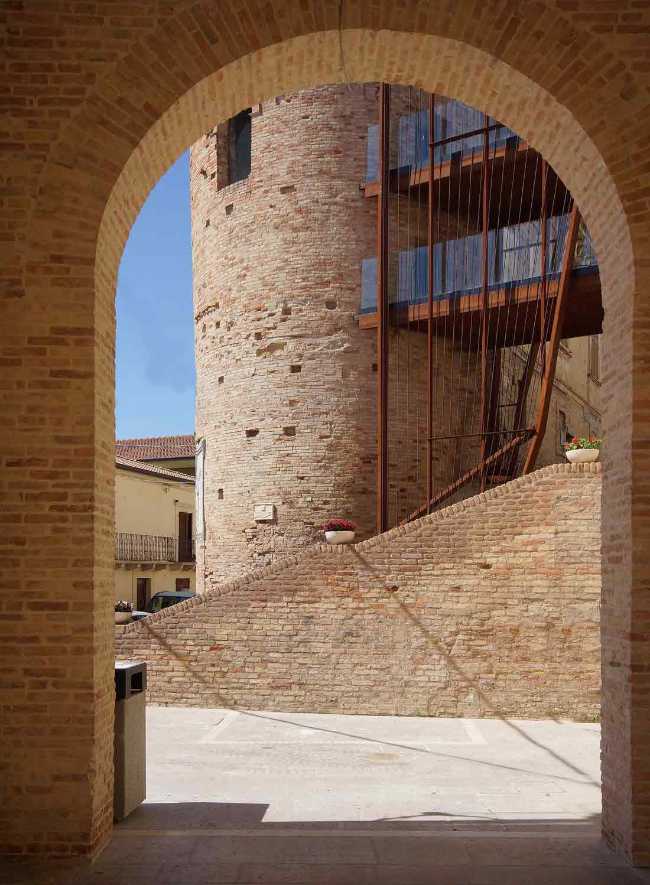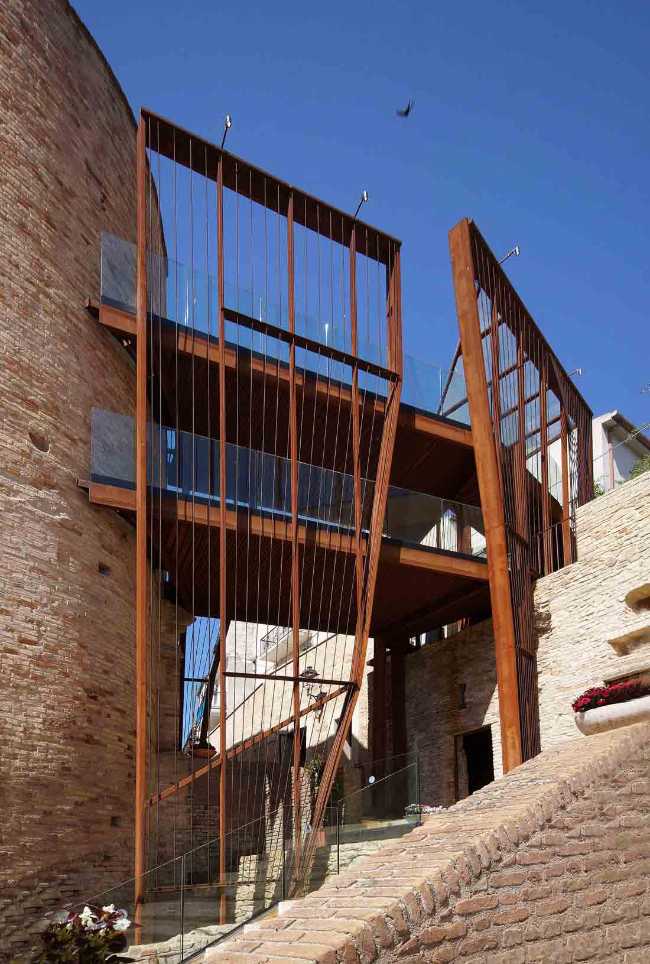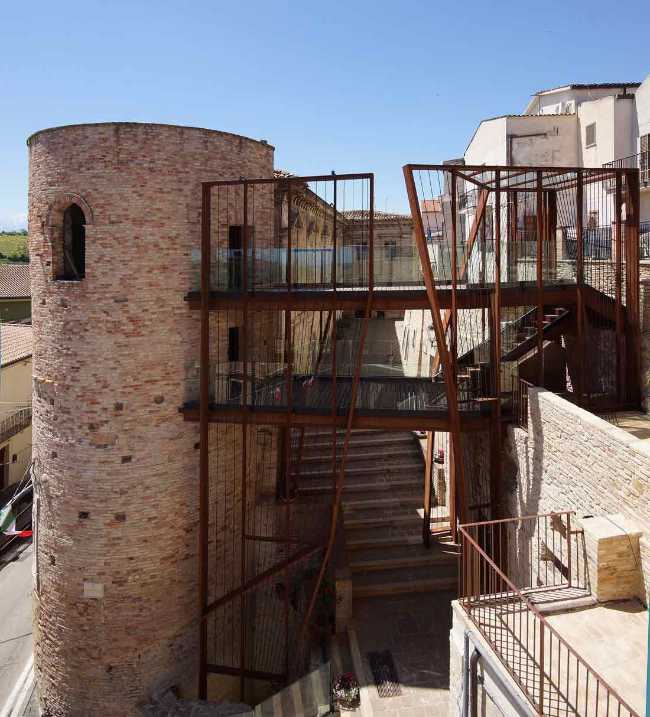

The ancient village on the hills
Ripa Teatina is a beautiful village perched on the hills of the province of Chieti which, thanks to its vestiges of ancient civilization, impresses visitors and transports them into the past, on a fascinating journey through time. Due to its elevated position, since the first settlements, the village has proved to be a very useful strategic outpost and this distinctly military vocation was maintained even during the Middle Ages: evidence of this is the sturdy city walls and a network of watchtowers.
The gates of the fortified city were demolished during the Second World War, leaving an urban void and a disconnection between the defensive structures and the connecting structures of the historic center.
Where once stood Gabella gate, there was only a wide staircase. Through historical research, the study of floor plans and photographic evidence, it was possible to reconstruct the original appearance of the gate. It was found to be connected to the adjacent building by means of a transverse masonry structure, which allowed direct passage between the two structures, making all floors of the Tower accessible.

